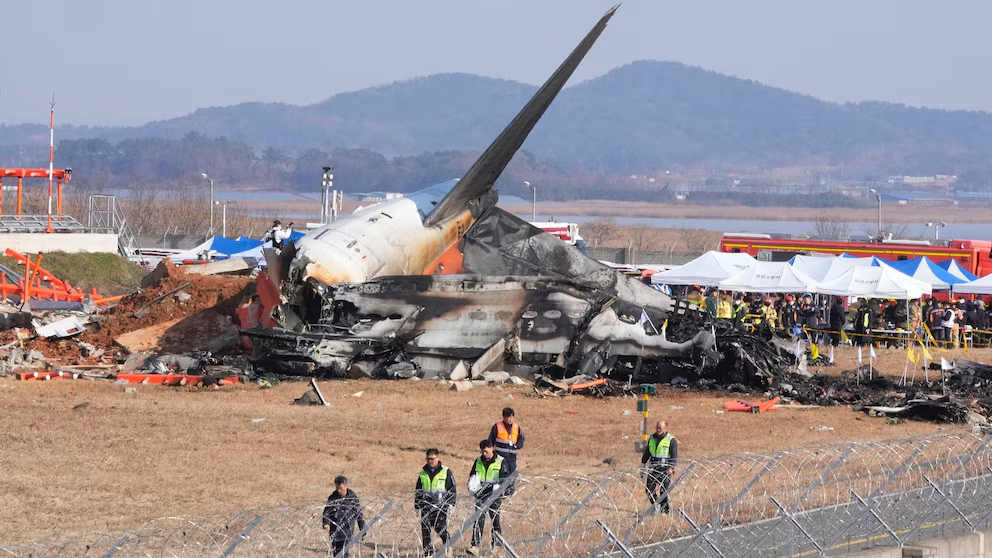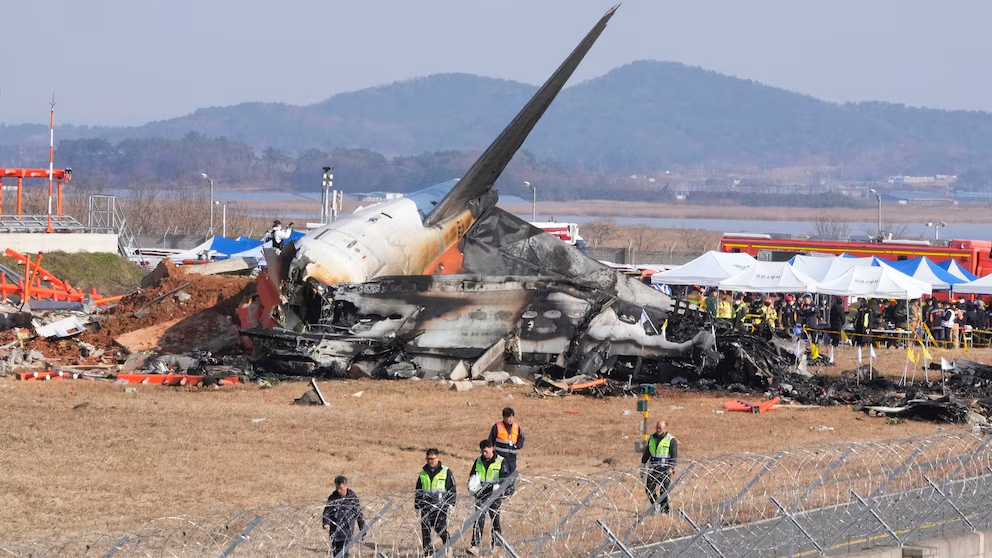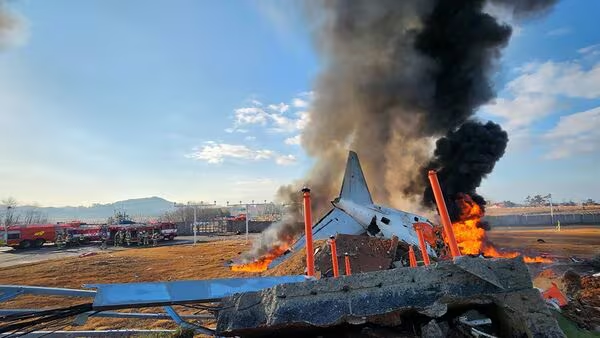
South Korea Plane Crash: Jeju Air’s Boeing 737-800 crashes during landing at Muan Airport, claiming over 160 lives. Details on possible causes, rescue efforts, and the airline’s response.
A routine flight turned into a nightmare on Sunday as a Jeju Air flight from Bangkok to South Korea met with a tragic end at Muan Airport. The Boeing 737-800, carrying 181 passengers, crashed during its landing attempt, claiming the lives of at least 151 individuals.
The incident, one of the worst aviation disasters in South Korea’s history, has left the nation mourning. Here’s everything we know so far about the South Korea plane crash, its possible causes, rescue efforts, and the airline’s response.
Timeline of the South Korea Plane Crash
The South Korea Ministry of Land released a detailed timeline of events:
- Flight Details: Jeju Air Flight 2216 departed from Bangkok and was scheduled to land at Muan Airport.
- Bird Strike Warning: At 9:03 am (local time), the control tower warned the pilot of a potential bird strike during the plane’s first landing attempt.
- Distress Call: Minutes later, the pilot issued a “Mayday” warning, signaling a critical situation.
- Crash and Aftermath: At approximately 9:06 am, the aircraft attempted a belly landing, skidding on the runway with its landing gear retracted. It crashed into a wall at the end of the runway, bursting into flames.

Possible Causes of the Crash
While investigations are ongoing, preliminary reports suggest the following contributing factors:
- Bird Strikes:
- A bird strike occurs when birds collide with an aircraft, potentially damaging engines or other critical components.
- Officials confirmed a bird strike warning was issued moments before the crash.
- Adverse Weather Conditions:
- Local reports indicate challenging weather conditions during the landing attempt, which may have exacerbated the situation.
- Runway Adequacy:
- Despite initial speculation, aviation officials dismissed concerns about the runway’s length, noting that it is 2,800 meters long, suitable for similar-sized aircraft.

Rescue Efforts and Casualties
The crash left the aircraft almost completely destroyed, resulting in a high fatality rate:
- Confirmed Deaths: 151 passengers.
- Survivors: Only two individuals have been rescued from the wreckage so far.
- Rescue Operations:
- Hundreds of firefighters, military personnel, and emergency responders were deployed to the crash site.
- The South Korean government declared the area a special disaster zone, enabling extensive state support for recovery and relief efforts.
Acting President Choi Sang-mok addressed the nation, offering condolences and promising comprehensive assistance to the victims’ families.

Jeju Air’s Response
Jeju Air’s CEO, Kim E-bae, expressed deep regret over the tragedy, stating:
“Regardless of the cause, I take full responsibility as the CEO.”
The airline has pledged to:
- Fully cooperate with investigative authorities.
- Provide financial and emotional support to the victims’ families.
This crash marks the first fatal accident in Jeju Air’s history, a devastating anomaly for an airline and a nation with a strong aviation safety record.
Impact on South Korea’s Aviation Industry
South Korea’s aviation industry is known for its stringent safety measures. The last notable incident involving Jeju Air occurred in 2007, when a Bombardier Q400 skidded off the runway due to strong winds, resulting in minor injuries.
This tragedy raises critical questions about:
- Emergency Protocols: Could the response to the bird strike warning have been improved?
- Safety Standards: Are additional measures needed to prevent bird strikes near runways?


